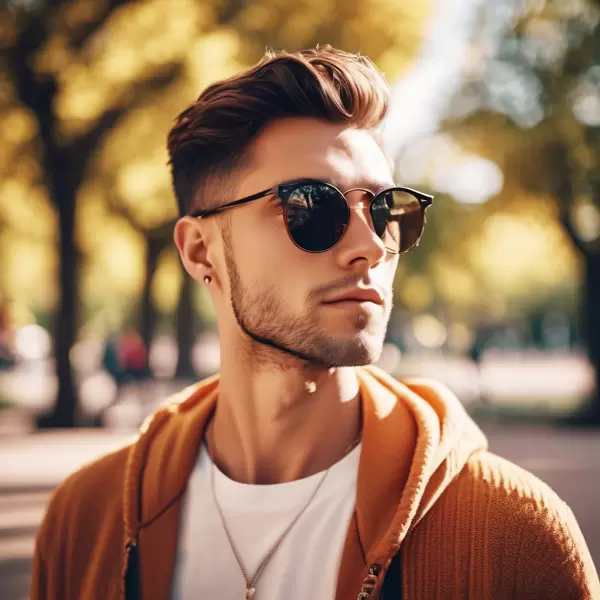Effective communication is a cornerstone of healthy relationships, whether personal or professional. Mastering the skills of setting boundaries, redirecting conversations, and defusing conflict can significantly enhance your interactions. This guide offers practical advice and examples to help you navigate these critical aspects of communication with confidence and empathy.
Setting Boundaries in Conversations
Understanding Boundaries
Boundaries are essential for maintaining respectful and functional relationships. They define what is acceptable and what is not, ensuring that interactions are mutually respectful. Boundaries can be physical, emotional, or psychological.
- Physical Boundaries: These involve personal space and physical contact. For example, you might set a boundary by saying, “I need some space right now.”
- Emotional Boundaries: These relate to how you want others to treat your feelings and emotions. An example could be, “I’m not comfortable discussing this topic.”
Setting Clear Boundaries
Setting boundaries requires clarity and assertiveness. Here’s how you can articulate them effectively:
- Be Direct and Specific: Instead of vague statements, be clear about your needs. For example, “I need to leave work by 5 PM to attend my evening class” is more effective than “I have plans after work.”
- Use “I” Statements: This helps in expressing your needs without sounding accusatory. For instance, “I feel overwhelmed when meetings run late. Can we stick to the scheduled time?”
Maintaining Boundaries
Consistency is key in maintaining boundaries. Here’s how to ensure they are respected:
- Reiterate as Necessary: If someone crosses your boundary, calmly restate it. For example, “As mentioned earlier, I need to keep my weekends free for family time.”
- Handle Pushback Professionally: Address resistance calmly and assertively. For instance, “I understand you have concerns, but I must stick to my boundary to manage my work-life balance.”
Redirecting Conversations
Recognizing When to Redirect
Sometimes, conversations veer off course or become unproductive. Recognize these signs:
- Off-Topic Discussions: If a conversation strays from the main subject, it might need redirection.
- Escalating Tension: When discussions start to become heated, redirecting can help defuse the situation.
Techniques for Effective Redirection
Use these techniques to steer conversations back on track:
- Ask Open-Ended Questions: Encourage a more productive dialogue by asking questions that require more than a yes or no answer. For example, “How can we approach this issue differently?”
- Summarize and Redirect: Restate what has been discussed and gently guide the conversation to a relevant topic. For instance, “We’ve discussed several points; let’s focus on the key issue at hand.”
Maintaining Positive Communication
Even while redirecting, it’s important to keep the conversation respectful:
- Acknowledge Points of View: Show that you understand the other person’s perspective. For example, “I see where you’re coming from, but let’s return to our main agenda.”
- Stay Calm and Respectful: Avoid raising your voice or showing frustration. Maintain a calm demeanor to keep the conversation productive.
Defusing Conflict
Identifying Conflict Triggers
Understanding what triggers conflict can help in managing it effectively. Common triggers include:
- Misunderstandings: Miscommunication can lead to conflicts. Clarify any ambiguities early on.
- Differing Values or Goals: Conflicts often arise from differing values or goals. Identify these differences to address them constructively.
Defusing Techniques
Implement these strategies to defuse tension:
- Active Listening: Show that you are engaged and empathetic. Reflect back what the other person has said to validate their feelings. For example, “It sounds like you’re frustrated with the current process.”
- Empathy and Acknowledgment: Acknowledge the other person’s emotions and show understanding. For instance, “I understand this situation is challenging for you.”
Seeking Resolution
Work towards a resolution by finding common ground:
- Identify Shared Goals: Focus on what you both agree on and work from there. For example, “We both want this project to succeed; let’s find a way to address our concerns.”
- Negotiate Solutions: Offer and discuss potential solutions that satisfy both parties. For instance, “How about we adjust the deadlines to accommodate everyone’s needs?”
Encouraging Empathy

The Role of Empathy in Conversations
Empathy enhances communication by fostering understanding and connection. It helps in:
- Building Trust: Empathetic responses can strengthen relationships and build trust.
- Improving Collaboration: Understanding others’ perspectives can lead to more effective teamwork.
Practicing Empathy
Develop empathetic responses with these practices:
- Listen Actively: Pay full attention to the speaker and avoid interrupting. For example, nodding and maintaining eye contact shows you’re engaged.
- Use Empathetic Language: Phrases like “I can see how you feel” or “I understand this is important to you” demonstrate empathy.
Short Thank You Messages for Music Teachers
Concise Appreciation
Short thank you messages can be impactful when they are sincere. Examples include:
- “Thank you for your dedication and patience. Your lessons have made a big difference!”
- “I appreciate your hard work and the progress I’ve made. Thanks for being such a great teacher!”
Tips for Crafting Effective Short Messages
- Be Specific: Mention what you appreciate. For example, “Thanks for helping me master the scale exercises.”
- Keep It Genuine: Ensure your message reflects your true feelings.
Funny Thank You Messages for Music Teachers
Injecting Humor
Humor can make your thank you message memorable. When appropriate, consider:
- “Thanks for teaching me to play the piano. Now I just need to figure out how to make it sound like music!”
- “I didn’t think I’d ever enjoy practicing scales, but you’ve made it fun. Thanks for not making me feel like a robot!”
Balancing Humor with Respect
Ensure humor doesn’t undermine the gratitude. Aim for messages that are both funny and appreciative:
- “Your lessons have been a real treat—almost as good as the pizza I’ll get to celebrate!”
Thank You Note to Music Teacher from Student
Structuring the Note
A well-structured thank you note includes:
- A Greeting: Start with a friendly salutation. For example, “Dear Mr. Smith,”
- Expression of Thanks: Clearly state what you’re grateful for. “Thank you for your patience and for making every lesson enjoyable.”
- Personal Reflection: Share how their teaching has impacted you. “I’ve learned so much about music and myself.”
- Closing: End with a warm closing. “Sincerely, [Your Name]”
Examples of Student Thank You Notes
- “Dear Ms. Johnson, Thank you for your inspiring lessons and for helping me grow as a musician. I’ve enjoyed every class and learned so much. Best regards, Emily”
- “Hi Mr. Davis, Thanks for being an awesome piano teacher. I appreciate your encouragement and the fun we’ve had in our lessons. Cheers, Alex”
Thank You Piano Teacher Messages from Parents
Crafting a Meaningful Note
Parents should highlight their child’s progress and the teacher’s impact:
- Acknowledge the Teacher’s Role: “Thank you for being such a supportive and skilled teacher. We’ve seen great progress in [Child’s Name].”
- Include Personal Observations: “Your lessons have not only improved [Child’s Name]’s piano skills but also boosted their confidence.”
Examples of Parent Thank You Messages
- “Dear Ms. Brown, We’re so grateful for your dedication and the progress [Child’s Name] has made. Your passion for teaching is truly inspiring. Thank you! Best, The Johnson Family”
- “Hello Mr. Green, Thanks for making piano lessons enjoyable and effective for [Child’s Name]. We appreciate your hard work and the positive impact you’ve had. Regards, The Smiths”
Final Thoughts
Mastering the art of setting boundaries, redirecting conversations, and defusing conflict can lead to more effective and respectful interactions. By applying these techniques and strategies, you can enhance your communication skills and foster better relationships. Whether dealing with everyday conversations or expressing gratitude to music teachers, clear, empathetic communication is key.
Frequently Asked Questions (FAQs)
Q1: How can I make my thank you message to my music teacher more personal?
- Personalize the Content: Mention specific lessons or moments that were meaningful. For example, “I really enjoyed the way you explained the nuances of the sonata.”
Q2: Is it appropriate to give my music teacher a gift along with a thank you message?
- Yes, but Consider the Context: Small, thoughtful gifts are often appreciated. Avoid overly expensive items and choose something that reflects your appreciation, like a personalized note or a gift card to a favorite store.
Q3: When is the best time to express gratitude to my music teacher?
- At Significant Moments: Key times include the end of a school year, after a successful performance, or during holidays. Expressing thanks during these times makes your gratitude more impactful.
Q4: Should I send a handwritten note or an email to thank my music teacher?
- Handwritten Notes are More Personal: A handwritten note often feels more heartfelt, but email can be appropriate for quick acknowledgments, especially in professional settings.
**Q5: How can I encourage my child to express gratitude to their
Case Study: The Impact of Clear Communication on Student Progress
Background
A music academy in New York implemented a structured communication training program for its teachers, focusing on setting boundaries, redirecting conversations, and defusing conflicts. The aim was to improve the quality of student-teacher interactions and enhance overall student satisfaction and progress.
Implementation
The academy introduced the following strategies:
- Setting Clear Boundaries: Teachers were trained to set clear boundaries with students regarding practice expectations, lesson schedules, and feedback sessions. This included establishing set times for lessons and office hours for questions, ensuring that both students and parents knew when and how to approach teachers.
- Redirecting Conversations: Teachers practiced redirecting off-topic discussions during lessons to maintain focus. For example, if a student began discussing personal issues unrelated to music, teachers learned to acknowledge the student’s concerns but steer the conversation back to the lesson objectives.
- Defusing Conflicts: The academy provided conflict resolution training, equipping teachers with tools to handle frustrations and misunderstandings calmly. This included active listening techniques and empathetic responses to student concerns.
Results
After six months, the academy observed the following outcomes:
- Improved Student Progress: Students showed a 20% increase in skill development, as measured by performance assessments. The structured approach allowed for more focused practice and productive lessons.
- Enhanced Teacher-Student Relationships: Teachers reported a 30% improvement in their relationships with students, citing more respectful and engaged interactions.
- Reduced Conflicts: There was a 40% decrease in reported conflicts between teachers and students. The emphasis on empathy and clear communication helped address issues before they escalated.
Conclusion
This case study highlights the significant positive impact of clear communication on student progress. By setting boundaries, redirecting conversations, and defusing conflicts effectively, the music academy not only improved student outcomes but also fostered a more supportive and respectful learning environment

James Wilson, an acclaimed author on Taclers.com, has a passion for exploring the nuances of human interaction. His profound observations and eloquent prose bring a new dimension to understanding reactions. Join him on a journey through the intricate dance of emotions and responses.










